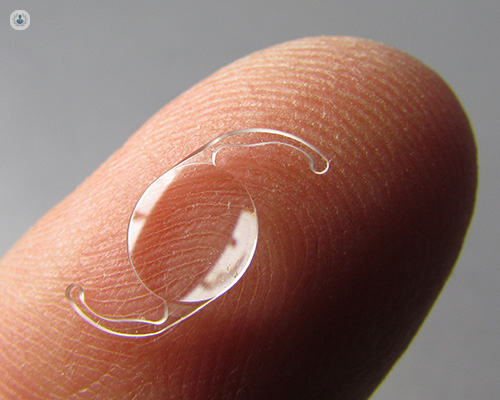All about different types of lenses and their uses
Escrito por:Lenses are essential optical components used in a variety of devices, from cameras to microscopes and eyeglasses. They work by bending light rays to form an image, and their shapes and materials significantly affect their functionality. Here’s an overview of the different types of lenses and their uses, provided by esteemed consultant ophthalmologist, Mr John Awad.

Convex lenses
Convex lenses, or converging lenses, are thicker at the center than at the edges. They bend light rays inward, focusing them to a point. These lenses are commonly used in magnifying glasses, cameras, and corrective lenses for farsightedness. Their ability to converge light makes them ideal for applications requiring image enlargement and focus.
Concave lenses
Concave lenses, or diverging lenses, are thinner at the center and thicker at the edges. They spread light rays outward, making objects appear smaller. These lenses are used in devices like peepholes and corrective lenses for nearsightedness. Their diverging property helps in spreading light for a wider field of view or reducing image size.
Plano-convex and plano-concave lenses
Plano-convex lenses have one flat surface and one convex surface, often used to focus light in optical systems such as laser applications. Plano-concave lenses, with one flat and one concave surface, are used to diverge light beams in telescopes and other scientific instruments.
Biconvex and biconcave lenses
Biconvex lenses are convex on both sides and are used in imaging systems like projectors, where double curvature enhances focus. Biconcave lenses are concave on both sides, used for diverging light in specialised optical instruments.
Cylindrical lenses
Cylindrical lenses focus light into a line instead of a point, used in applications requiring light shaping such as in laser scanners and barcode readers. These lenses can be either convex or concave.
Aspheric lenses
Aspheric lenses have a more complex surface profile that reduces aberrations, leading to clearer images. They are used in high-precision applications like advanced camera systems and eyeglasses.
Each type of lens serves a specific purpose, leveraging its unique properties to manipulate light in ways that enhance vision, image capture, and scientific observation. Understanding these differences is crucial for selecting the right lens for any optical application.
To book an appointment with Mr John Awad today, visit his Top Doctors profile.


